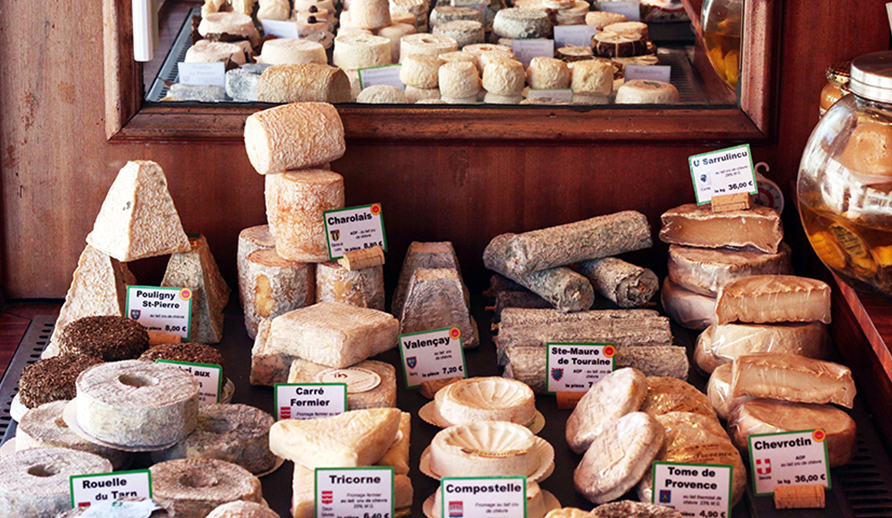
Frozen food is given high value for being convenient and for helping reducing food waste. Indeed, at a temperature below -18°C, the activity and development of micro-organisms are considerably slowed down, which increases the shelf life of food, while preserving its nutritional qualities and organoleptic properties.
But while the storage temperature is an important criterion, the packaging also plays an essential role in the preservation of frozen food.
Before discussing the most common materials used to package frozen food, let’s start with an overview of the packaging process and the properties required of the packaging.
How are frozen products packaged ?
Before being packaged, freshly prepared food is first deep-frozen. A distinction must be made between deep-freezing and freezing. Freezing is a slow process, with the core temperature of -18°C being reached in several hours in a similar temperature environment (usually -18°C to -24°C). This process used by individuals generates large ice crystals that puncture the food, altering its texture and flavour. Freezing, an industrial process, makes it possible to reach -18°C in just a few minutes via a much lower temperature. This much faster cooling process allows the water in the food to crystallize out finely, thus preserving the texture and flavour of the food.
After the freezing stage, comes the packaging phase. In general, packaging is carried out in a cool environment (a few degrees above zero) so that the frozen product, which is only in this area for a short time, does not risk thawing. Among the automatic packaging processes most commonly used in the frozen food sector are the packaging of a bulk product (vegetables, French fries, ready meals, etc.) in a plastic bag on a VFFS (Vertical Form Fill Seal) line, as well as individual packaging in a plastic film on a flowpack machine (pizzas, minced steaks, etc.) followed by cardboard packaging (secondary packaging).
The packaged frozen product is then stored at a temperature below -18°C for optimal preservation.
The properties of packaging for frozen products
The primary packaging for frozen products must first of all be suitable for contact with foodstuffs in order to maintain a certain degree of inertness with respect to the foodstuff, i.e. it must not transfer substances to the foodstuff in proportions exceeding the thresholds set by the regulations.
It must also be watertight to avoid contamination, preserve the frozen product (limit its dehydration and oxidation and retain its flavours), limit the formation of ice crystals on the surface of the food, and avoid liquid leaks when the entire bag is defrosted.
The plastic film must also have good sealability properties, especially as seals are usually made in a cool environment. A low-melting layer of LDPE (low density polyethylene) is therefore often used.
The outer packaging can be opaque to hide the appearance of the frozen product, or transparent and shiny to highlight it.
Finally, good mechanical resistance to cold is required for the outer packaging, which will be subjected to mechanical stress. LDPE-based plastic films are recommended as they have good tear resistance at low temperatures. Often a proportion of metallocene PE is incorporated into LDPE to further improve the mechanical strength of the film, as some frozen products such as shrimps are particularly sharp and perforating.
Some examples of frozen food packaging
Depending on the frozen product, different types of packaging can be found. The packaging for a bulk product is often different from that for a pizza or fish fillets.
Bulk frozen products (vegetables, French fries, ready meals, etc.) are often packaged in white LDPE bags on a VFFS line.
LDPE film has a medium barrier to moisture and a poor barrier to gases (oxygen, flavours, etc.). However, this is often sufficient to provide a long shelf life for frozen foods, as migration, oxidation and micro-organism development are slowed down at low temperatures. PE single-material films also have the advantage of being recyclable.Single-material PP films are not recommended for frozen bulk. This is because PP stiffens at low temperatures, which makes the film more brittle. The welds become too brittle and the tear strength too low to ensure a packaging process and bag handling without breaking the film.
If gloss, print protection and stiffness or a crispness effect is desired, a laminated film such as PET/PE, OPP/PE or PA/PE can be used. A PA/PE barrier film can also be used for vacuum packaging (e.g. salmon steaks), which has a number of advantages: space saving, longer shelf life, and less ice crystals formed on the surface of the product. Vacuum laminates are usually transparent so as to highlight the product.
Finally, packaging for products such as pizzas, hamburgers or minced steaks generally consists of an individual primary packaging made of PE or PP (flowpack) and a cardboard box acting as an overwrap. The low mechanical strength of PP at low temperatures is not a problem in this case, as the outer cardboard packaging can take the mechanical stress.
While LDPE remains the predominant plastic material, different packaging can be used to best protect and promote each type of frozen product.


